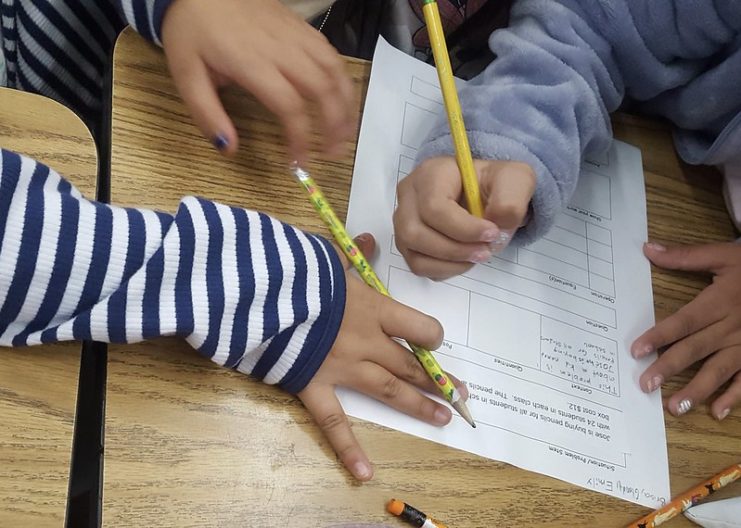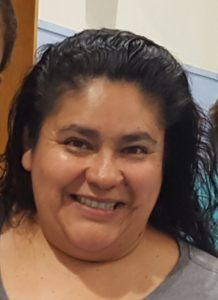
Finding “The Why” in Math Word Problems
Word problems can be confusing and overwhelming, especially for Newcomers, who eventually have to take the Math component of the state test their first year in school. With this in mind, I decided to focus my inquiry with Mills Teacher Scholars this year on supporting my Newcomer students to express their thinking as they solved math word problems. I wanted them to tell me the “why” behind their choice of operations and quantities. I didn’t want them to just get an answer, I wanted them to think about the process by which they came to the answer.
A Bumpy Beginning
As I started my inquiry, I modeled the 3 Read strategy with my students. I also taught them to use a template that I developed to capture their thinking and math work. As they went off to work, I had them start in groups of three, which I imagined would then become groups of two and soon they would be doing the work on their own. But when I reviewed their work, I found myself upset and frustrated.
In the reasoning part of the template, many students gave these kinds of reasons for why they chose their strategy: “To find the answer” or “Because I like to multiply.” I knew these responses were not what I was looking for. With the help of my colleagues in my Mills Teacher Scholars inquiry group, I realized that what I wanted to see was reasoning with understanding of the problem.
The Power of Clear Expectations
I decided to model another word problem, this time focusing on the reasoning component. I made my own thinking very clear and explicit, and I told them that as they were working the problem out they needed to think about:
- What am I looking for?
- What information do I have that can help me?
- Why am I using this operation?
- What does my product, sum, difference or quotient mean or represent?
They went off into groups to work again. The more explicit expectations helped one third of my class to meet my criteria for success (10 students out of 28). The others were still struggling with understanding and explaining why a certain approach would help them solve the problem. Gains were made, but I still felt frustrated. I had thought the gains would be greater.
Turning to My Students and Colleagues for Help
Out of the six Newcomer students in my class, the experiences of two students had the highest impact on my inquiry learning. With the encouragement of my colleagues in my inquiry group, I interviewed these students to better understand what was going on for them and how I could better support their math reasoning. Juan and Dahlia were able to convey their own frustrations with word problems and pinpoint what specifically made the word problems so difficult for them. They said that sometimes there were just “too many numbers.” Sometimes there were “two or more questions to answer.” Other times “the words were tricky.”
At this point, I attended another Mills Teacher Scholars meeting. In my small group I shared the current reality of my inquiry, especially the information I got from the student interviews. A fellow teacher suggested I approach the word problems as a text and annotate them for deeper understanding. And so I added a fourth read to the 3 Read strategy: a close read of the word problem.
Trying Again to Get to the Why
I introduced the 4th read to a word problem as a whole class. I modeled circling unknown words, underlining important phrases, and putting a question mark next to confusing part, just as we do in language arts. As they worked on the problem, I walked around and I could hear more conversation related to the information on the problem. When I next looked at my students’ work, I saw that they had written reasoning that clearing showed their thinking. They responded, “We need to multiply the number of books by the number of boxes to find the total number of books” and “Our first step is to find how many books there are.” Slightly more than half of my students were explaining their thinking (16/28). I was happy that we were on our way.
Going forward, I want to remember that teaching is a team effort. It can’t be done alone. As a teacher, I need to check in with my students to gain insight on what specifically is stumping them and what I needed to do to help them move forward. The support of colleagues, too, is as important a part of the inquiry process as the inquiry itself.
 Eva Beleche has been teaching in Oakland Unified School District for 22 years. She has taught all grades, K-5 and is currently teaching fourth grade at Global Family School. She enjoys teaching math and using the 3 READ strategies to help students understand word problems.
Eva Beleche has been teaching in Oakland Unified School District for 22 years. She has taught all grades, K-5 and is currently teaching fourth grade at Global Family School. She enjoys teaching math and using the 3 READ strategies to help students understand word problems.
